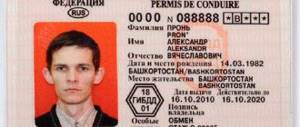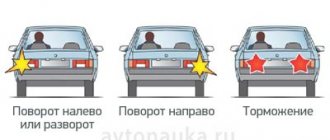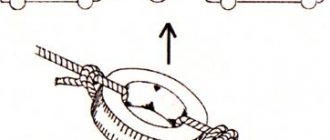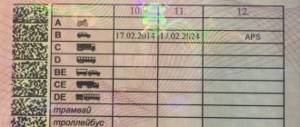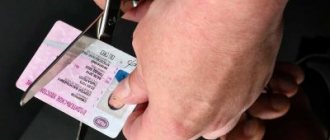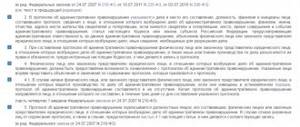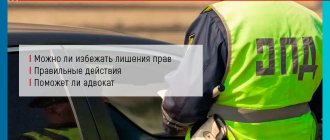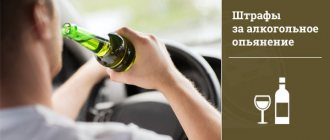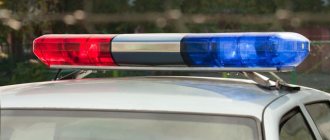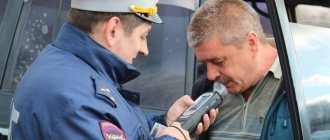Why is such research needed?
Drug intoxication examinations are carried out in specialized 24-hour medical offices by appropriate staff with certain qualifications. During such a study, medical workers will have to determine whether a person is in a state of drug intoxication.
The purpose of such a drug intoxication examination is to accurately determine the absence or presence of a state of intoxication, to document the fact of the use of narcotic drugs, psychotropic, intoxicating, psychoactive or other dangerous substances that can cause such a state. After all, a person loses control over his actions and can pose a real threat to himself and others.
Such a medical examination for drug intoxication includes several stages:
- A thorough examination conducted by an experienced and professional narcologist-psychiatrist.
- Examination of the air exhaled by a person suspected of using illegal substances for the presence of alcohol. This is a mandatory point of investigation, even when a citizen is brought in to find out whether he has used drugs.
- Determination of the presence of psychoactive substances in urine.
- If such substances are found there, their concentration in the biomaterial is examined.
- A study of the level of psychoactive substances contained in the blood is also carried out.
Suspension from work due to drug intoxication
Removing an employee from work who is under the influence of drugs is not a right, but an obligation of the employer. This requirement is established by Part 1 of Art. 76 of the Labor Code of the Russian Federation. This is due both to the high risk of an employee getting injured at work and to the danger he poses to his colleagues.
The basis for removing an employee from work is an act of evidence of signs of drug intoxication or a medical report. Termination of work is formalized by an appropriate order.
In the order, the employer indicates:
- Full name of the suspended employee, position held by him
- reason for release from work function
- period of suspension
- resolving the issue of payroll
The order is signed by the employer, supporting documents are attached to it and is handed over to the employee for review “under signature”. If an employee refuses to familiarize himself with the order, then a separate act in any form is drawn up about this.
If the order does not indicate the period of suspension from performing a labor function, then it will be necessary to issue an additional order to terminate the period of suspension.
USEFUL : read the full procedure for removing an employee from work at the link
Inspection process
Now we will analyze in detail the procedure for testing for drug intoxication. After an examination by a psychiatrist-narcologist, the exhaled air is examined for the presence of alcohol vapors. Such a study is carried out at intervals of 20-25 minutes. However, if the result is negative during the first test, then a repeat examination of the exhaled air is no longer carried out.
The result of this test is recorded using specialized measuring equipment and recorded on paper and electronic media. These are the requirements of current Russian legislation.
Does an employee have the right to ask to pee in a jar?
The first point to pay attention to is that the inspector can only ask you to urinate in a cup. The inspector has no right to demand that you submit your urine for analysis; he is not a doctor.
Why doesn't he have the right to demand? Yes, because all its legal requirements are spelled out in the Federal Law on Police and Administrative Regulations. And the roadside inspection procedure itself does not include a urine test as such.
But his request is painted in an orderly tone, and not every driver knows that he can simply ask the inspector again: is he offering or demanding? After answering that he is only asking, the policeman must be conveyed the following idea: since he has suspicions of intoxication, then let him act according to the standard scheme, which implies an examination and a medical examination.
You will also be interested in:
- Who is responsible for the car if the driver is picked up by traffic police officers and taken away?
- Can your license be revoked for smoking tobacco and cigarettes while driving?
- Suspension from driving a vehicle in questions and answers
Examination of car drivers
Most often, vehicle drivers are brought to a drug treatment clinic for appropriate examination. If, during an inspection or checking documents, a traffic police inspector has strong suspicions that the driver is under the influence of alcohol or drugs, he invites him to undergo an appropriate study.
When such a driver is brought to a drug treatment clinic for the purpose of conducting a study, complaints and anamnesis are first collected, as well as a visual and detailed examination, which can reveal clinical signs of intoxication in a person.
Next, regardless of the results of testing the exhaled air for the presence of alcohol, biological materials are collected and sent for chemical and toxicological testing. These include blood and urine.
Drug test results: transcript
Fig.: Drug test results
Test results are received, what to do in this or that outcome?
Positive drug test: what to do
If you have finally clarified your suspicions about a loved one and drugs were detected in his tests, you need to take immediate action. It is best to contact a trusted clinic - a narcologist will convince the patient to start treatment, select an individual program, and help the addict’s family behave correctly.
Cases of false positive tests also exist. Most often this happens during express testing. After taking certain medications or even smoking a regular cigarette, the strip may react like a drug. There is also the possibility of defective strips. If you have not consumed anything prohibited, you need to go to a drug treatment clinic for accurate blood tests.
Negative drug test
If a loved one behaves suspiciously, but the tests are negative, you need to try to find out what is the reason for such a change in character. For example, teenagers often become irritable; adults may experience stress from problems at work or in their personal lives.
If all the signs point to drugs, and the tests are negative, it makes sense to consult a narcologist. A doctor can use a person's behavior to determine whether he or she is taking illegal substances. In addition, the specialist will also recommend which research method would be best to conduct for a final and reliable result.
Who else needs to be tested?
There are also several other categories of citizens who have to undergo a medical examination for drugs. These include:
- persons who have committed administrative offenses;
- persons for whom the result of the examination is important for the investigation of a criminal case, refutation or confirmation of the commission of a crime or administrative offense, consideration of a case of an administrative offense;
- military personnel called up for military service or military training;
- employees who showed up at the workplace with signs of drug intoxication;
- unemployed people who showed signs of drug intoxication for re-registration;
- adult citizens who independently came for examination;
- minors, in order to establish signs of drug or toxic intoxication;
- citizens who have been declared incompetent in accordance with the procedure established by law, if they themselves are not able to give consent to such an examination being carried out in relation to them.
If during the drug examination at least three signs of intoxication were identified that can be classified as clinical, samples of biological materials are taken. This is urine and blood. They are sent for subsequent chemical and toxicological testing. This happens even if the first and repeated tests of exhaled air for the presence of alcohol in it turn out to be negative.
In a chemical-toxicological study, specialists determine the presence and level of narcotic substances in the human body, as well as the level of their metabolites, which caused intoxication, with the exception of alcohol.
Procedure for dismissing an employee for drugs
When dismissing an employee for drug use, we recommend following the following algorithm:
- record the fact of drug intoxication . At this stage, a report on the presence of signs of intoxication is drawn up and the employee is invited to undergo a medical examination;
- remove an employee from performing a job function . Suspension from work may not precede dismissal. For example, if an employee’s drug intoxication became noticeable at the end of a work shift, then it is simply pointless to remove him from work. At other times, the employer is obliged to remove the employee from performing his job function;
- request and receive a written explanation from the employee . Dismissal is a disciplinary sanction. In order to be subject to disciplinary liability, it is necessary to request an explanation from the employee in writing. An explanation must be provided to the employer within two working days;
- issue a dismissal order . The dismissed person must be familiarized with the relevant order within three working days after its issuance. On the day of dismissal, a full settlement is made with the former employee.
USEFUL : watch the video about the dismissal of an employee, and also read the link
results
A medical examination for drug intoxication is issued in the form of an official act in the form established by the Ministry of Health of the Russian Federation. There are several types of such forms (for drug, alcohol, toxic intoxication), but we are interested in studying the level of narcotic substances in the human body.
This act of examination for drug intoxication is certified by the signature of the doctor who conducts the examination itself.
When citizens are referred for drug testing by an employer, the organization enters into an agreement for the provision of paid medical services with the appropriate clinic, which has certain licenses, permits and competence to conduct such a study. As a rule, the employer's choice is a drug treatment clinic at the place of residence.
Most often, organizations that oblige their employees to undergo such checks are law enforcement and medical structures, companies that care about their reputation.
Referral by employer
An examination for drug intoxication is carried out for compelling reasons, the list of which is approved by law.
Thus, the basis for conducting such a study may be, for example, a referral issued by the employer, to which is attached the employee’s written consent to voluntarily conduct this examination. Also, a current or potential employee of this organization must give permission for the processing of his personal data, and also sign a statement that he does not object to the results of his examination being transferred to the employer. In this case, the examination is not carried out anonymously.
The referral received from the employer by a current or potential employee when applying for a job contains information about the employee who is being sent for this study, as well as information about the authorized person who must receive the results and become familiar with them.
In this case, the results of the drug test must be ready within ten days. During this period, the employer’s representative indicated in the referral is given a completed report, as well as a certificate with detailed results of a chemical-toxicological study and data obtained from the collection of exhaled air. These materials must be provided on paper. The citizen who completed the study receives copies of them.
Drug test
A drug test can be done at home. Using it, you can find out with up to 98 percent probability whether a person uses drugs.
What is a drug test
A drug test detects the presence of narcotic substances in human biomaterials. By reacting with urine or saliva, the indicator shows the presence of traces of heroin, hashish and other drugs in the body. The home test has a fairly high sensitivity - amphetamine or heroin is detected five days after use, and marijuana - after 2 weeks.
What does it look like
A pharmacy drug test is a paper strip impregnated with special reagents. Urine or saliva is used for testing, interpretation is carried out in accordance with the instructions.
Photo
Figure: What a drug test looks like
How to use a drug test at home: instructions
To get the correct result, it is important to follow the instructions. Urine testing requires the use of sterile plastic containers. At the same time, it is important to ensure that it is not possible to replace the biomaterial. The collected urine can be kept in the refrigerator until purchasing the test, but no more than 2 hours. Before testing, you need to leave the test container at room temperature for half an hour.
The strip is lowered into the urine to the specified limit, the result can be assessed after 5 minutes. The presence of one strip in the control area indicates the presence of drugs. If two stripes appear - both in the test area and in the control area, the result - no drugs were detected.
Figure: How to use a drug test
What does a drug test show?
The home testing method allows you to identify the following narcotic substances:
- Marijuana.
- Heroin.
- Morphine.
- Amphetamine, methamphetamine.
- Cocaine.
- Methadone.
- Barbiturates.
- Psychotropics.
- Benzodiazepine.
The use of so-called spices cannot be detected at home - the composition is constantly changing, which complicates diagnosis. If the person being tested does not behave quite adequately, and the test strips show a negative result, it makes sense to contact the clinic for a detailed analysis.
How are drug addiction tests done in the hospital?
A test at a drug dispensary will give a more accurate and detailed result. The laboratory can examine not only urine, but also blood, saliva, and hair. For example, heroin accumulates in hair tissue, so it will be possible to find out about its use even after 2-3 months. For a hospital examination, you need a referral, as well as a license from the institution to conduct this type of research. An official conclusion is drawn up by a doctor.
Where is mandatory drug testing required?
A drug intoxication test is carried out if traffic police officers have reason to believe that a person is under the influence of alcohol or drugs. If alcohol is determined by a breathalyzer, then the presence of narcotic substances is detected only in a specialized laboratory. Refusal of a medical examination is an automatic recognition of an inadequate condition.
Almost all civil service employees undergo mandatory drug testing when applying for a job. For example, to the police. In addition, foreign citizens must undergo a medical examination to obtain a work permit in the Russian Federation. Pilots, athletes, machinists, astronauts - there are many professions where workers are constantly checked.
As for analyzes in schools, colleges and institutes, everything is on a voluntary basis. Although the statistics are sad - almost 40 percent of teenagers over the age of 12 have tried drugs. Testing in educational institutions is not aimed at punishing the student, but at the early detection of drug addiction. The earlier the problem is noticed, the greater the chance of treating the teenager.
Free test
Free testing is carried out only in situations where medical research is required, for example, traffic police officers in controversial situations. An employer can also pay for a drug test for employees, but purely at will. You can refuse such a check, but this will involuntarily arouse suspicion.
Fig.: Drug test
In case of self-application
If there is a need to independently apply for an independent examination for drug intoxication, then the citizen in this case should enter into an agreement for the provision of paid medical services. It is concluded with an individual directly at the place where the service itself is provided, that is, in a clinic or drug dispensary.
In this case, the basis for the examination will be considered a written statement from the citizen, in which he declares his desire to undergo this examination, describes in detail the reasons why he needs it, and also presents a document proving his identity. The same application must provide consent to the processing of personal data and confirmation of voluntary consent to conduct such an examination.
In this case, the period for conducting the survey is minimal. The study is carried out immediately after the medical organization receives all the necessary documents. After this, the citizen who wishes to undergo this examination is given a receipt according to which he must pay for this service. As a rule, this can be done at the accounting department or cash desk of a medical institution.
The results of this examination, as well as the study of exhaled air, are transferred to the citizen only after he pays in full for this service.
The medical organization undertakes the responsibility to transfer the materials of this medical examination no later than ten days after receiving the receipt paid in full. The results of the study are sent in a single copy. The citizen receives a completed protocol, two results of the air he exhales, as well as a certificate of the results of the chemical and toxicological examination. At the medical institution, they are handed over to the customer of the study personally.
According to the protocol
Traffic police officers send drivers for a medical examination according to the appropriate protocol. On the road they stop motorists for violations to check documents. Even during a short conversation, inspectors can identify signs of intoxication. This is the smell of alcohol on the breath, unsteady posture, speech impairment, a sharp change in the color of the skin of the face, and behavior that does not correspond to the situation.
The inspector offers to undergo an examination on the spot - to breathe into a breathalyzer. Let us remind you: alcohol intoxication is established if 1 liter of exhaled air contains more than 0.16 mg of absolute ethyl alcohol. But even if the result for alcohol is negative, the traffic police officer can send the driver for examination to a medical institution. After all, a breathalyzer does not show whether a person has used illegal substances, but, let’s say, there are such suspicions. In case of an accident with victims, all drivers involved in the incident must undergo this procedure.
In our city, medical examinations of drivers are carried out in separate divisions of the regional clinical drug treatment clinic. These are three modular buildings built in 2014 - 2015 at hospitals No. 1 named after Pirogov, No. 2 named after Semashko and No. 7. This is where inspectors accompany motorists and wait for them to undergo an examination. Law enforcement officers may also be present at the procedure itself if their charges behave aggressively.
The procedure for conducting the study is determined by order of the Ministry of Health of the Russian Federation dated December 18, 2015 No. 933n.
“Several stages of the procedure take an average of 20 to 40 minutes,” said Zhanna Kiseleva, head of the medical examination department of the narcological dispensary. — The results are included in the act.
Features of the selection of biomaterials
It is worth noting that a positive result of testing exhaled air for the presence of alcohol is considered to be the presence of an absolute concentration of ethyl alcohol, which exceeds the total error of the device. That is, more than 0.16 milligrams per liter of air exhaled by a person.
In order to determine whether a person’s body contains narcotic substances, a urine test is performed. However, the law provides for cases when blood can be taken for analysis instead.
This happens if the person being examined suffers from an acute form of the disease. Either his health condition is so bad that his life is in danger, or he declares that within half an hour he is not able to provide the amount of urine required for a full examination.
In this case, a medical worker with appropriate qualifications will draw blood into two tubes. Blood for this study is taken from a superficial vein.
Examination procedure
Quite often, traffic police officers send drivers who show clinical signs of using prohibited substances to be tested for drug intoxication. For this purpose, the driver of the vehicle is first examined by a doctor or paramedic. Then biological material is collected from him, in this case urine, and then it is examined as part of a chemical-toxicological study, and a rapid analysis is carried out.
To conduct a reliable study, it is necessary to obtain at least 30 millimeters of urine in a special disposable container. The driver takes the test in the toilet room, where conditions have been created that exclude the possibility of substituting biological material.
In addition, in order to exclude falsification of the urine of a driver whom the traffic police suspect of using narcotic substances, within the first three minutes after collecting the analysis, the temperature of this biological material is measured using a special non-contact device, in which automatic registration of the measurement results is planned. You can ensure that the presented biological material is not counterfeit if its temperature is above 30 degrees Celsius.
Based on the results of this study, the doctor draws up a conclusion in which he comes to one of the conclusions: the person was in a state of alcohol or drugs, intoxication was not established, or he refused to be examined.
If the driver’s biomaterials contain a maximum level of chemical substances, then it is officially recognized that he was in an inappropriate condition. Based on the results of the examination for drug intoxication, the traffic police draws up an administrative protocol in which the corresponding violation is entered: driving while intoxicated. The documents are sent to the court, where the issue of depriving the driver of his license is already being decided.
To prove the driver’s guilt, it is enough that 500 nanograms of opiates, 50 nanograms of cocaine, 25 nanograms of cannabinoids, 500 nanograms of barbiturates were found in his biomaterials.
We are on Twitter:
Login Registration
Automotive news
Rules for the movement of heavy trucks in the automatic weight control zone have been adopted. The Federal Tax Service has approved the application form for the death or destruction of a vehicle. In Russia, it is forbidden to disembark children without a ticket from buses. A new sign 6.22 has been introduced in the traffic rules - “photo and video recording” Testing for alcohol dependence has been postponed for another year. The Ministry of Health has updated the requirements for completing car first-aid kits, the Ministry of Transport has approved the procedure and terms for storing diagnostic maintenance cards. Obtaining permission for international transport will now be done in a new way. You can now check your MTPL policy for authenticity online. The Central Bank has set new tariffs for MTPL.
/ Legal articles on the topic of automobile law / Adm. liability for traffic violations / drug testing
Drug testing
Unfortunately, in recent years, drivers under the influence of drugs have become increasingly common on Russian roads.
In accordance with the note to Article 12.8 of the Code of Administrative Offenses of the Russian Federation, the presence of narcotic drugs or psychotropic substances in the driver’s body is considered a state of intoxication. At the same time, it does not matter how much time has passed since the person used the drug and what effect it has on the person at the current moment. It makes no sense to prove to the inspector and the court that “I smoked a week ago,” because the very fact of the presence of a drug in the urine or blood will be regarded as being in a state of intoxication
A medical examination of the driver for the presence of narcotic drugs or psychotropic substances in his body is carried out in a hospital using a procedure, the rules of which are prescribed in the following documents with a long title: 1. Rules for determining the presence of narcotic drugs or psychotropic substances in the human body during a medical examination for intoxication person who drives the vehicle . These Rules were approved by Decree of the Government of the Russian Federation No. 475 of June 26, 2008 and define the general regulatory provisions for the examination. 2. Rules for conducting chemical and toxicological studies during medical examination , approved by Order of the Ministry of Health of Russia No. 933n dated December 18, 2015. These Rules already establish in more detail the procedure for the selection and study of biological materials.
We strongly recommend that you carefully read these documents (available in the public domain on the Internet) in order to more effectively protect your rights and legitimate interests during the examination.
The procedure itself for checking the presence of narcotic drugs in the human body is carried out in drug dispensaries or medical organizations that have the right to perform work on clinical laboratory diagnostics or forensic medical examination of material evidence and the study of biological objects. The medical essence of the examination comes down to the examination of the driver’s biological material (urine, or in some cases blood).
Urine collection from the driver should be carried out as follows: first, urine in a volume of at least 30 ml is taken from the citizen. and in his presence they test for drugs using the so-called express method. If the result of this test is negative, then no further measures (sending urine for laboratory tests) are carried out. If the initial rapid test gives a positive result, the biological material is sent for further laboratory testing.
The period for conducting chemical and toxicological studies in the laboratory should not exceed 3 working days from the date of receipt of the sample.
This is important: many drugs, including marijuana, take a very long time to be eliminated from the body. A person who has smoked just one cigarette with illegal weed risks being left without a license, even if he gets behind the wheel in a week, and in some cases, even in a month (the time frame for removing cannabinoids from the human body depends on individual characteristics). And for those who regularly use drugs, traces of prohibited substances may be constantly present in the body
The conclusion based on the results of the driver’s examination, in the case of sending the biomaterial for research, is not issued immediately, but after a few days (sometimes weeks), after the relevant laboratory tests have been carried out.
Unfortunately, modern drug testing methods are such that, under certain conditions, drivers who have used certain medications that are completely freely sold in pharmacies can fall under the “deprivation” article. Most often, drivers who use various painkillers that contain codeine or phenobarbital are at risk. In judicial practice, there have already been numerous situations when drivers who drank the harmless Pentalgin-N were deprived of their licenses.
To prevent this from happening to you, we strongly recommend that you consult with qualified auto lawyers on all issues.
Helpful advice: if circumstances permit, try to film the entire examination procedure from start to finish. If in the future you appeal against administrative liability in court, the video recording can be a good help
Refusal to undergo a drug test entails administrative liability for the driver of the vehicle under Art. 12.26 of the Code of Administrative Offenses of the Russian Federation, regardless of passing the examination procedure for alcohol intoxication.
Still have questions? We are ready to answer them right now:
How do they cheat at gas stations?
Rules for passing a vehicle inspection
medical examination
6981
No comments yet. Yours will be the first!
Write a comment
New comments
Badyrgy → Removal and expungement of a criminal record under Art. 264.1 of the Criminal Code of the Russian Federation 21 hours ago
Convicted in 2014 of Part 1 of Article 264 of the Criminal Code of the Russian Federation with restriction of freedom and deprivation of rights for 1 year. How to expunge a criminal record? And where to go
Vladimir → Is it necessary to give way to a bus leaving the bus stop… 15 days ago
The rules state that the driver must give way to a bus departing from a stop within the city limits, but I drive at a speed of 60 km per hour at the main speed...
Automotive Lawyer → Deprivation of the right to drive under Art. 264 of the Criminal Code of the Russian Federation. About the most... 1 month ago
Hello. The period of criminal punishment in the form of deprivation of the right to drive runs, regardless of whether the vehicle is passed or not. The traffic police have been punished for enforcing this...
Evgeniy → Deprivation of the right to drive under Art. 264 of the Criminal Code of the Russian Federation. About the most... 1 month ago
Good evening! In 2014, he was convicted under Part 264 of the Criminal Code and served a real sentence of 2 years in a penal colony; the court also deprived him of his license for 3 years, after...
Automotive Lawyer → Deprivation of the right to drive under Art. 264 of the Criminal Code of the Russian Federation. About the most... 1 month ago
Hello. The terms of deprivation under the article of the Code of Administrative Offenses of the Russian Federation and under the article of the Criminal Code of the Russian Federation are not cumulative. Each term is calculated independently, i.e., independently of each other
